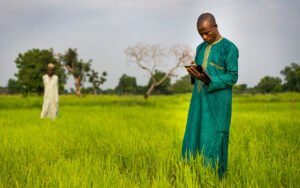Microinsurance, a type of insurance designed to protect low-income people from financial risks, has become a powerful way to promote social and economic equality. Microinsurance is changing people’s lives, especially for women in poor countries where it is difficult to obtain regular insurance. Microinsurance is a very important way for women to become empowered and improve their lives, as it protects them from health problems, environmental disasters, and economic uncertainty.
This article discusses how microinsurance can empower women in poor countries, including its benefits, the challenges women face, and how it can change their lives and the lives of those around them.
Microinsurance and Its Importance:
Microinsurance offers low-cost insurance products to meet the needs of low-income people. These products cover risks in business, agriculture, and health care. People who do not qualify for standard coverage can still get it because the premiums are low and the policy is specifically tailored to their needs. This program is important for women and other vulnerable groups in developing countries where financial security is hard to achieve.
Why is Microinsurance Important for Empowering Women?
Empowering women is not only the right thing to do; it’s also good for business. Research shows that a large portion of the money women earn is reinvested back into their families, communities, and local economies. But because they don’t have enough money, they often fall into a cycle of poverty. Microinsurance helps women become more financially stable, breaking out of these cycles and allowing them to give back to their communities more effectively.
Key Ways Microinsurance Empowers Women:
1. Financial Security and Independence
Women can protect their finances through microinsurance, reducing the likelihood of falling into debt due to unexpected events such as illness, poor harvests, or accidents. Women who don’t have much other support can find this kind of financial security particularly empowering. It helps them save, spend, and make decisions that make them more independent.
2. Easier Access to Healthcare
For women in poor countries, the cost of health care is often a major concern. Micro health insurance covers basic medical expenses so that women can care for themselves and their children when they need it. When they are healthier, they are better able to work, raise a family, and participate in their communities.
3. Encourage Business Entrepreneurship
When women have microinsurance to cover the risks of doing business, they are more likely to start a small business or do something else that makes money. When women know that their investments are safe with insurance, they are more likely to seize business opportunities, create jobs, and help grow local economies.
4. Increase Crop Yields
Many rural women work in agriculture, where they face risks from pests, bad weather, and other factors beyond their control. Agricultural micro insurance protects against these risks by compensating for crop losses and helping to maintain income stability. This allows women farmers to invest their money in better seeds, tools, and sustainable farming practices, increasing yields and ensuring food security.
5. Help Children Go to School
Microinsurance can help people feel more secure about their money, freeing up more money for their children’s education. Women with health insurance are less likely to pull their children out of school to pay unexpected bills. This creates better opportunities for the next generation, leading to greater growth and empowerment.
Challenges Women Face When Trying to Get Microinsurance:
Despite the promise of microinsurance, it remains difficult for women in developing countries to access it and take full advantage of it. Here are some key questions:
1. Not Knowing What to Do with Money
To understand the importance of insurance and how it helps individuals and families, you need to know a lot about money. In many places, women have limited access to financial education, which can prevent them from getting insurance or understanding the terms of a policy.
2. Barriers Caused by Culture and Society
In many developing countries, women may not be able to make as many financial decisions as men due to cultural norms and traditional roles. In some cases, women need permission from a male relative to spend money, which can prevent them from purchasing microinsurance.
3. Difficulty Reaching Banks and Other Financial Institutions
In rural and remote areas, it can be difficult to contact banks or insurance companies. Without access to microinsurers, it is harder for women to access their services and understand what they have to offer. Some of these gaps are being filled by mobile insurance services, but not being able to use technology properly is still a problem.
4. Affordable Price
Although microinsurance is cheap, some rates can still be too high for the poorest households. When the economy is unstable, such as during a crisis, even small payments can seem too expensive for women, leaving them without coverage.
What does Microinsurance mean for Women?
Microinsurance doesn’t just help women who have it; it also strengthens families, cities, and economies.
- Economic Growth: Economically stable women spend, save, and start their businesses, which contributes to local economic growth. Microinsurance helps women better cope with threats and strengthens economies.
- Improved Social Status: Being financially independent and able to make financial choices can help women move up in their communities. This can give hope to other women and change the way women’s work is viewed.
- Better Health Outcomes: Women with health insurance are more likely to receive medical care when they need it, reducing maternal mortality and improving the health of the entire family.
- Greater Gender Equality: Microinsurance gives women the financial tools they need to make life and career decisions.
Empowering women to control their financial futures through independence improves gender equality.
Giving More Women Access to Microinsurance:
To make microinsurance work better for women in poor countries, several measures can be taken:
- Educational Programs: Teaching women about money can help them make informed choices about microinsurance.
- Culturally Sensitive Outreach: Insurers should work with local leaders to remove traditional barriers and encourage women to participate in financial decision-making.
- Mobile and Digital Solutions: For women living in remote areas, mobile technology can help bridge the gap by giving them direct access to microinsurance products and information.
- Subsidies and Flexible Premiums: Governments and NGOs can help make microinsurance more affordable by offering discounts or letting people choose how they pay their premiums.
Conclusion:
Microinsurance empowers women by protecting their businesses and livelihoods, providing them with financial security, and paying for their healthcare. Microinsurance supports women’s equality, community resilience, and long-term growth by removing some of the financial barriers that prevent women from working. With more outreach, education and outreach, microinsurance can better serve women by giving them the tools they need to transform their lives and strengthen their communities.
FAQs:
1. What is microinsurance and how is it different from regular insurance?
Microinsurance is a type of insurance designed for low-income earners that covers key areas such as healthcare, agriculture, business, etc., at a price they can afford. Traditional insurance typically has higher rates and complex policy terms. Microinsurance, on the other hand, is easy to obtain, cheap, and designed to meet the needs of people who do not have much money. It is especially useful for women in poor countries because it is easy to understand and does not cost much money.
2. How can microinsurance help empower women?
Microinsurance empowers women by providing them with financial security and reducing the risk of health problems, crop failures, and sudden accidents. With this safety net, women can manage their money, invest in small businesses, and provide their families with better health care and education. This leads to greater financial freedom, higher social status, and better health, all of which contribute to achieving women’s equality and building community.
3. What challenges do women face in accessing microinsurance?
Despite the benefits of microinsurance, women in poor countries may find it difficult to access it due to a lack of financial literacy, cultural barriers, and lack of easy access to financial institutions. In some cases, even low-cost insurance may not be affordable due to economic instability. To make microinsurance more accessible to women, these issues need to be addressed through targeted education, flexible policies, and culturally informed promotion.
4. Is microinsurance a way for women-owned businesses to get help?
Yes, microinsurance can be a very useful tool for women running their businesses. By covering the risks associated with running a business, women are more likely to start or grow a small business without having to worry about losing money in an emergency. For example, microinsurance can help women cover losses in the event of illness or crop failure. This allows them to get back on their feet and reinvest in their business, helping to grow the local economy and create jobs.
5. What are some examples of micro-insurance schemes that work and empower women?
Yes, that is correct. Programs such as SEWA microinsurance in India, Grameen Kalyan microinsurance in Bangladesh, and index-based crop insurance in Kenya provide a great deal of help to women. Women’s financial stability, health, and social status have improved as a result of these programs, which cover business, agricultural, and health risks. Programs like these are a powerful example of how microinsurance can help developing countries achieve women’s equality and make their economies more stable.




